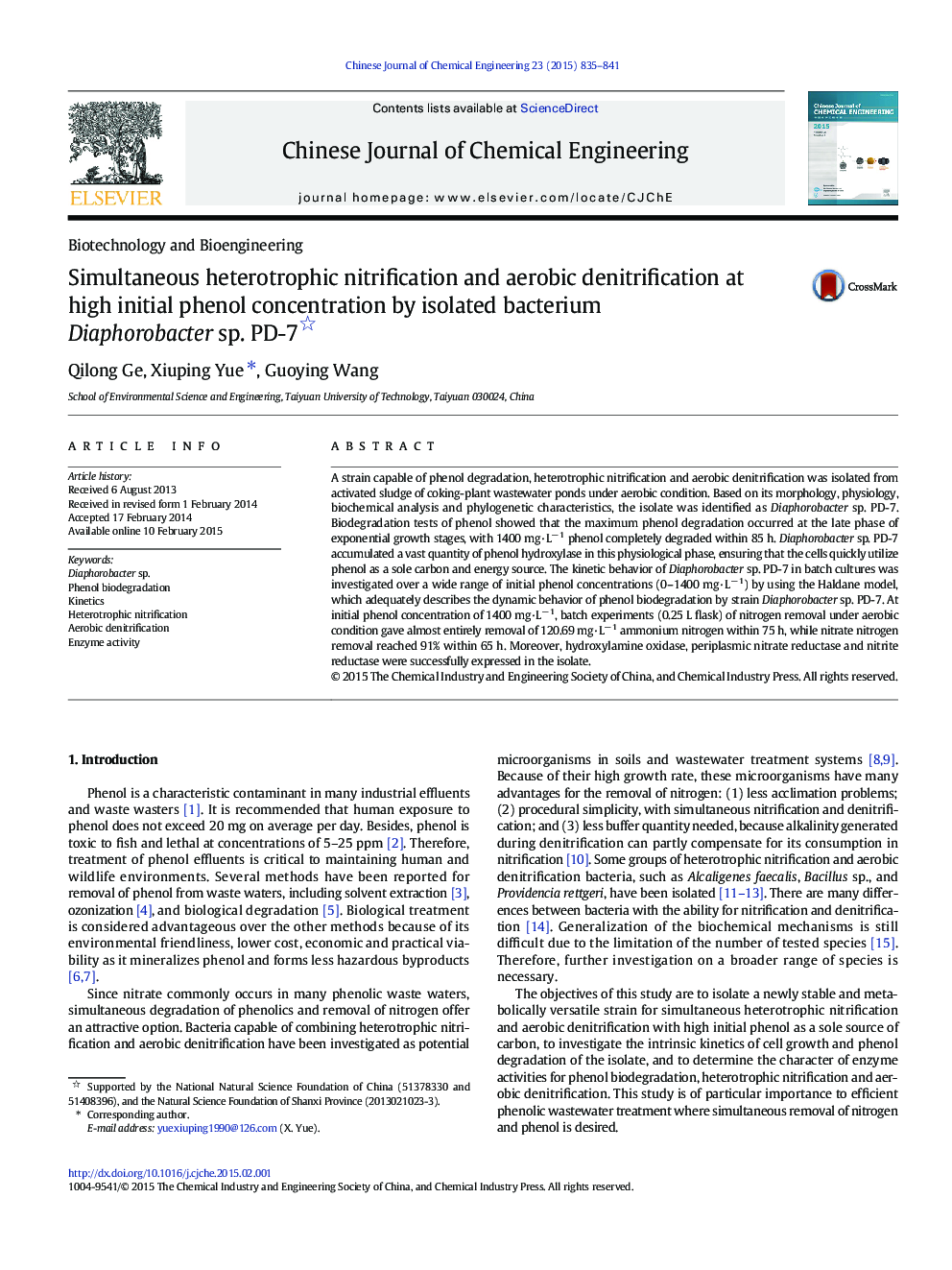| Article ID | Journal | Published Year | Pages | File Type |
|---|---|---|---|---|
| 167180 | Chinese Journal of Chemical Engineering | 2015 | 7 Pages |
A strain capable of phenol degradation, heterotrophic nitrification and aerobic denitrification was isolated from activated sludge of coking-plant wastewater ponds under aerobic condition. Based on its morphology, physiology, biochemical analysis and phylogenetic characteristics, the isolate was identified as Diaphorobacter sp. PD-7. Biodegradation tests of phenol showed that the maximum phenol degradation occurred at the late phase of exponential growth stages, with 1400 mg·L− 1 phenol completely degraded within 85 h. Diaphorobacter sp. PD-7 accumulated a vast quantity of phenol hydroxylase in this physiological phase, ensuring that the cells quickly utilize phenol as a sole carbon and energy source. The kinetic behavior of Diaphorobacter sp. PD-7 in batch cultures was investigated over a wide range of initial phenol concentrations (0–1400 mg·L− 1) by using the Haldane model, which adequately describes the dynamic behavior of phenol biodegradation by strain Diaphorobacter sp. PD-7. At initial phenol concentration of 1400 mg·L− 1, batch experiments (0.25 L flask) of nitrogen removal under aerobic condition gave almost entirely removal of 120.69 mg·L− 1 ammonium nitrogen within 75 h, while nitrate nitrogen removal reached 91% within 65 h. Moreover, hydroxylamine oxidase, periplasmic nitrate reductase and nitrite reductase were successfully expressed in the isolate.
Graphical abstractWith high initial phenol as sole carbon source, a newly stable and metabolically versatile simultaneous heterotrophic nitrification and aerobic denitrification strain was isolated from the activated sludge under aerobic condition using the traditional microbial technology. Incubated on a rotary shaker (180 r·min− 1) at 30 °C in an Erlenmeyer flask, its capacity of phenol degradation reached 1400 mg·L− 1. Nitrate nitrogen removal reached 91% within 65 h in the denitrification medium. Color changed from light green to bright blue when the strain grown on bromothymol blue medium contained 1400 mg·L− 1 phenol and 165 mg · L− 1 nitrate nitrogen. Hydroxylamine oxidase, periplasmic nitrate reductase and nitrite reductase are expressed in the isolate during the whole nitrogen removal process.Figure optionsDownload full-size imageDownload as PowerPoint slide
